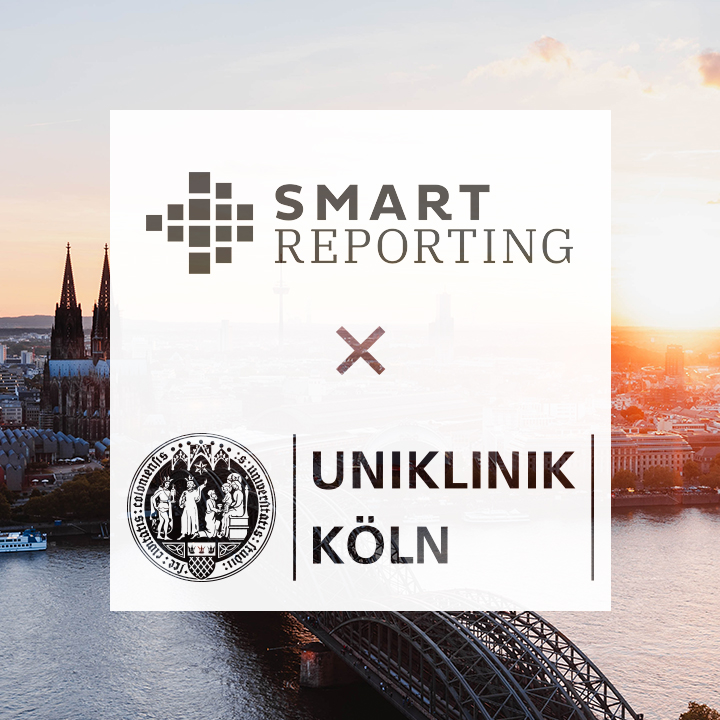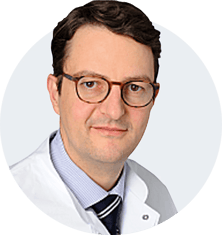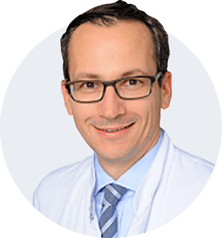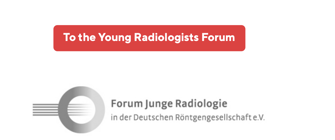Establishing structure in reporting.
University Hospital Cologne integrates Smart Reporting into ORBIS RIS and wins.

Intro
Save time, increase efficiency, improve quality. University Hospital Cologne, Germany aims to achieve these three objectives with Smart Reporting’s structured reports – and has succeeded in doing just that.
Medical findings are usually reported as free-form texts, which can cause problems in communication. Studies have shown that information relevant for further treatment is often missing and that reports can vary widely between radiologists, making comparability extremely difficult. Structured reporting changes all that. Why has this become such a hot topic lately?
The Story

"The trend is generally heading towards personalized medicine. And that requires much more in-depth analysis of the data. That, in turn, requires structured information, which radiologists can provide with structured reports,” explains Prof. David Maintz, Director of the Institute for Diagnostic and Interventional Radiology at University Hospital Cologne. “It is possible to structure free-text reports in hinsight, but the question remains, whether they actually contain all relevant information. According to various studies, that is often not the case. And this is why we believe that structured reporting is the best way forward."
Prof. Dr. David Maintz, Direktor des Instituts für Diagnostische und Interventionelle Radiologie Universitätsklinikum Köln.
Development of new reporting templates
The development of the German Radiological Society’s diagnostic templates has been driven by Cologne‘s activities. Dr. Thorsten Persigehl, who is also the head of the Oncology Imaging Committee of the German Radiological Society, initiated the creation of the oncological reporting templates. Along with the participation of clinical experts - oncologists, gastroenterologists, surgeons, and pathologists - the template content was defined in several consensus meetings.

"With that scientific basis, we wanted to ensure that the user is guided through the reporting process using a defined structure. The interdisciplinarity of the development work ensured that the report contains all relevant information needed by the clinicians."
Dr. Thorsten Persighel, Leitender Oberarzt Universitätsklinikum Köln
Following his colleague's example for oncology, Professor Maintz, president of the Cardiac Imaging Group within the German Radiological Society (DRG), worked on MRI and CT templates for cardiac examinations with the support of cardiologists, pediatric cardiologists, and heart surgeons. All the reporting templates from the DRG working groups are available on the society’s homepage for radiologists to use. As for the question of why the University Hospital Cologne’s radiologists decided on Smart Reporting as a solution to establish structured reporting, Senior Physician Dr. Daniel Pinto dos Santos says:
Up until that point, we had been using the templates from the German Radiological Society by inserting text modules using copy-paste. With the Smart Reporting solution, we hope to make this workflow easier, especially since the design of the user interface is more appealing and clearer. Of course, this transition will take some time, but we are confident that the benefits will outweigh the effort.
Simple, fast, secure
Smart Reporting is being used primarily for interventional radiology, but other areas of radiology have also started to implement it. One of the ‘power users’ is Senior Physician and Head of Angiography Dr. Alexander Bunck. With the help of Smart Reporting’s template creator, he was able to create custom reports for the majority of interventions performed in radiology. Dr. Bunck is convinced of Smart Reporting as an optimal solution that guides radiologists through the reporting process using mandatory fields.
In his view, the Smart Reporting solution enables a significant increase in efficiency in the reporting process, especially for interventional radiology. The reason: many interventions follow the same scheme and often differ only in smaller details, such as the materials used. “I can usually put the findings together with just a few clicks of the mouse,” says Dr. Bunck.

"With one click, we can open the Smart Reporting application in our Orbis RIS system. Then, we select the appropriate template to start the report. We are then greeted with a very clear interface of yes-no questions as well as selection lists to guide us through all the essential aspects of the finding. Measured variables, materials used, or special findings can be supplemented via free text fields in the Smart Reporting findings window. For this purpose, graphs and diagrams can also be integrated into the findings. After completion, the report is transferred to the radiology information system with a simple click of the mouse,” says Dr. Bunck, who considers direct RIS integration essential. “Otherwise, I would have to switch between two programs, which would cause unnecessary delay."
Dr. Alexander Bunck, Senior Physician University Hospital Köln (Cologne)
“After a period of adjustment and getting familiar with the platform, the report is completed much faster,” Dr. Bunck observed. “And that’s exactly what we wanted: to save time and increase efficiency,” added Prof. Maintz.
Prof. Maintz sees benefits for both newly qualified and experienced colleagues. “The less experienced are given a guide they can follow, while veteran radiologists can be sure to cover aspects they may not be aware of. For example, it is often important to mention things that are not visible in the image. The referring physicians need to be sure that all relevant pathologies have been taken into account,” explains the Institute‘s Director.
Maintz and his team are convinced that this way of reporting conveys key information much better. In addition, the report quality improves and the findings are easier for the referring physicians to read and interpret.
Another group that benefits from structured reporting is the radiologists in training. “They learn how to report in a relatively short span of time on a variety of cases. Sometimes, young radiologists are faced with an image but don’t quite know what is actually important,” Dr. Pinto dos Santos explains. “Structured reporting really helps in these cases because it provides guidance.” Using report templates allows radiologists to maintain a high degree of standardization in their reports. “Regardless of the doctor, the reports are consistent and we are guaranteed a high level of quality and completeness. This saves everyone unnecessary calls from the referring physician,” says Prof. Maintz, highlighting the additional advantages of the solution. Furthermore, the acceptance among radiologists that work with Smart Reporting is very high. The fact that structured reporting is not yet commonplace is not a matter of a lack of acceptance, according to Prof. Maintz: “Unfortunately, it always takes time for new solutions to become established in clinical practice. People are slow to let go of old habits and get used to new ones.” As of now, structured reporting is not yet mandatory. “Still, the more radiologists use the new system, the more other colleagues will start using it as well,” asserts Dr. Pinto dos Santos.
According to the hospital’s Senior Physician, the feedback they have received from the referring physicians is consistently positive: “Anyone who has received a structured report once, insists on them afterward. In fact, they even complain whenever we forget and send a free-text report instead.”
As an example, pancreas carcinoma reports which are used to determine operability. In these cases, it is crucial that certain aspects are covered and mentioned in the report. When that is not the case, the surgeon needs to call the radiologist with follow up questions, for instance, to clarify if blood vessels have been infiltrated. Questions such as these are already answered in structured reports and thus save radiologists time because they don’t need to respond to additional queries.
University Hospital Cologne, Germany
The University Hospital Cologne is a full-service hospital with 59 departments and institutes. Around 380,000 patients are looked after every year, 63,000 of them as inpatients in the hospital’s 1,570 beds. The Institute for Diagnostic and Interventional Radiology employs about 60 radiologists working on machines including eight MRT, five CT, and three angiography units. The Institute carries out approximately 200,000 X-ray examinations per annum.
About the "Young Radiologists" Forum of the German Radiological Society
The Young Radiologists Forum is an exchange platform between radiology training assistants and pediatric radiologists, including a focus on neuroradiology and pediatric radiology. The aim of this forum is to set up a communication platform for young radiologists in the DRG.
